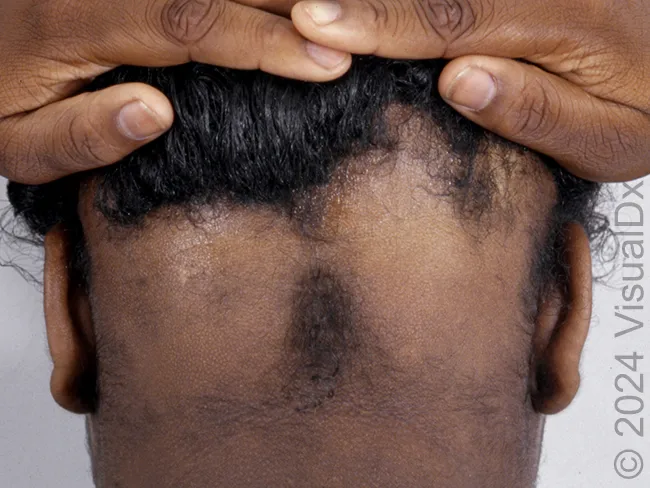Published on
Differential Diagnosis
- Alopecia areata
- Alopecia mucinosa
- Pseudopelade
- Telogen effluvium

Diagnosis
The correct diagnosis in this case is alopecia areata—an autoimmune disease of the hair follicle resulting in nonscarring hair loss. Most cases are sudden onset and limited to 1 or 2 small patches of alopecia that involve the scalp, eyebrows, eyelashes, or body hair. In severe cases, all hair on the scalp is lost (alopecia totalis), or all scalp and body hair is lost (alopecia universalis). There is an increased incidence of alopecia areata in patients with Down syndrome and those with autoimmune diseases, most commonly thyroid disease.
What to Look For
- Asymptomatic nonscarring hair loss usually in broad confluent smooth circular patches
- Occasionally tingling, burning or pruritus is experienced prior to hair loss
- Exclamation point hairs (short broken hairs with narrow proximal end compared to distal end) are pathognomonic
- Nail abnormalities may also be present
Pearls for Urgent Care Management
- Educate the patient that the course of alopecia areata is unpredictable with wide variation and note that recurrences are common
- Psychosocial support is important
- For adults, recommended therapy is intralesional corticosteroid injections; topical corticosteroids are also recommended if injections are not feasible
- For pediatric patients, recommended therapy is topical corticosteroids
Download the Article PDF: 36-Year-Old With Hair Loss
36-Year-Old With Hair Loss
1 2
